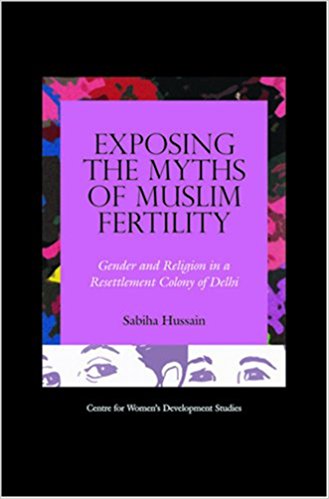Sabiha Hussain’s attempt to critically and empirically examine myths associated with Islam and demographic questions relating to fertility and increasing size of Muslim population is not only timely but a welcome addition to knowledge on a subject. A subject long queered by unsubstantiated and misinformed interpretations of religious texts, thereby politicizing what is avowedly a socio-economic issue on the one hand, and failure of the state to provide a safe and secure living environment, including minimum health services, on the other. The study was conducted in two localities (Gautampuri and Zaffrabad) of Delhi’s resettlement colonies, the latter being the by-product of urban development and consequent displacement of slum populations. While the two localities were similar as far as material endowment was concerned, the composition of the population was different.
Gautampuri had almost equal proportions of Hindus and Muslims but Zaffrabad was predominantly populated by Muslims. The author administered three types of questionnaires: one, a household census for general information and for selection of representative respondents; two, a questionnaire administered to men aimed at eliciting information on socio-economic profile of the households; and three, a questionnaire administered to men and women in the age-group 18-49 years with the specific purpose of capturing the reproductive profile of the population. In all, 200 women were chosen as respondents for the study.

